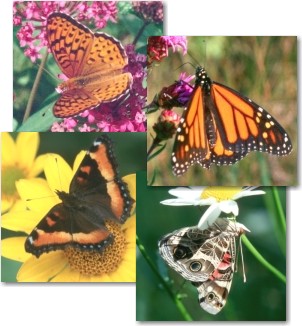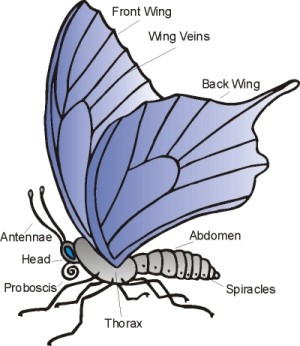|

|
Lepidoptera
Butterflies and moths belong to a group of insects called
the Lepidoptera. This word comes from the Greek words for
scale (lepis) and wing (pteron). Butterflies and moths are
the only insects with tiny, coloured scales on their
wings.
The Lepidoptera group includes 200,000 species, most of
which are moths. There are nearly 18,000 species of
butterflies in the world, and 155 species in Manitoba.
|

|
Butterflies evolved when flowering
plants
evolved, about 150 million years ago.
|
|
|

|
Butterfly
Bodies
Like all insects, butterflies have 3 main body parts:
head, thorax and abdomen. They have a hard exoskeleton made
of chitin (”kite-in”) and proteins.
Butterflies have 6 jointed-legs, compound eyes, a
pair of antennae and 4 large wings. They have a coiled tube
called a proboscis for eating, and breath through holes on
their abdomens, called spiracles.
|

